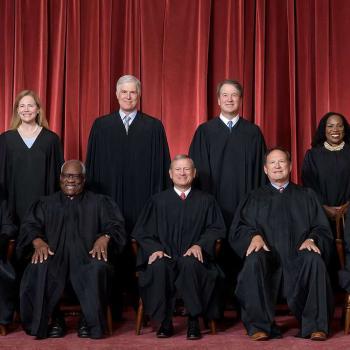In 2014, think tanker Henry Olsen studied polling and voting data for the last two decades and concluded that the Republican party contains four consistent “faces” (really, factions) that have remained remarkably stable over that time:
- moderate or liberal voters (25-30%);
- somewhat conservative voters (35-40%)
- very conservative, evangelical voters (20%);
- very conservative, secular voters (5-10%).
He shows how this breakdown accounts for the various presidential nominees, as the different factions coalesce around particular kinds of candidates during the winnowing process of the primaries. He is currently using this model to analyze the 2016 race as it unfolds.
From Henry Olsen’s original article, The Four Faces of the Republican Party – Ethics & Public Policy Center:
Moderate or liberal voters:
The moderate or liberal voter seems motivated by a candidate’s secularism above all else. They will always vote for the Republican candidate who seems least overtly religious and are motivated to oppose the candidate who is most overtly religious. This makes them a secure bank of votes for a somewhat conservative candidate who emerges from the early stages of the primary season in a battle with a religious conservative, as occurred in 1996, 2008 and 2012.
Somewhat conservatives:
They like even-keeled men with substantial governing experience. They like people who express conservative values on the economy or social issues, but who do not espouse radical change. They like people who are optimistic about America; the somewhat conservative voter rejects the “culture warrior” motif that characterized Pat Buchanan’s campaigns. They are conservative in both senses of the word; they prefer the ideals of American conservatism while displaying the cautious disposition of the Burkean.
very conservative evangelicals:
This group prefers candidates who are very open about their religious beliefs, place a high priority on social issues such as gay marriage and abortion, and see the United States in decline because of its movement away from the faith and moral codes of its past. Their favored candidates tend to be economically more open to government intervention.
very conservative seculars:
This small but influential bloc likes urbane, fiscally oriented men. Thus, they preferred Kemp or DuPont in 1988, Forbes or Gramm in 1996, Forbes in 2000 and Romney in 2008. In 2012, this group was tempted by Rick Perry until his lack of sophistication became painfully obvious in the early debates. It then flirted with Newt Gingrich until his temperamental issues resurfaced in Florida. After that, faced with the choice of Rick Santorum or Mitt Romney, it swung behind Romney en masse.
The latter example is in fact this group’s modus operandi. They invariably see their preferred candidate knocked out early, and they then invariably back whoever is backed by the somewhat conservative bloc.
Olsen says that the moderates and liberals, while getting hardly any attention, remain a significant force in the party. The very conservative seculars get most of the attention from the D.C. elite, though their small numbers mean they hardly ever get their way. The conservative evangelicals are a relatively small faction, but their influence is multiplied because they are strongly represented in the early primaries and come out to vote in large numbers. The somewhat conservatives, though, nearly always nominate their candidate. (I would add that the above description of them makes them sound not “somewhat” but actually conservative in their suspicion of radical change.)
For Olsen’s ongoing analysis of the 2016 election, go to his series at National Review Online here. (Right now he is picking Rubio.)
He also has a forthcoming book on the subject.











